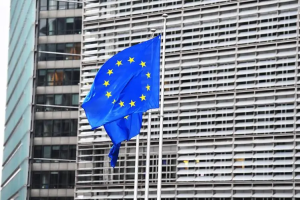This year, the North Atlantic Treaty Organization’s (NATO’s) military spending is skyrocketing. Defense spending across Europe and Canada is up 18 percent, the biggest increase in decades, said NATO Secretary General Jens Stoltenberg during his recent visit to the United States.

The NATO chief did not mince words about where the money would go. “Much of this increased defense spending is spent right here in the United States,” he said, adding that 23 allies will meet the target of spending at least 2 percent of gross domestic product (GDP) on defense in 2024.
In fact, a major driver behind the significant increase in NATO’s military spending is the United States’ persistent use of fear-mongering to foster “security anxiety” among its allies, primarily for its own benefit.
By fabricating imaginary enemies and employing fear-mongering, the United States compels NATO members to increase their military spending.
During the Ukraine crisis, the fear propagated by the United States has immersed European allies in security concerns, leading them to enhance their military readiness.
This has benefited American defense industries immensely. Over the past two years, European allies have signed contracts with American companies worth 140 billion U.S. dollars.
Therefore, it is not surprising when the NATO secretary general admitted that “NATO is good for U.S. security, good for U.S. industry, and good for U.S. jobs.”
Beyond economic benefits, the United States also fosters security dependency among its allies through manipulating their security strategies so as to maintain its dominant position in the Western world.
Take Finland and Sweden, for instance. These traditionally neutral countries have both joined NATO after the U.S.-led military alliance successfully dragged Russia into war with Ukraine.
At the Eurosatory 2024 exhibition in Paris, a trade show for the air and land defense as well as security industry, the United States stood out as the largest exhibitor after France, the host country.
The strong American presence turned this defense exhibition into a symbol of Europe’s dependence, said French media Le Figaro.
In reality, American fear-mongering conceals carefully orchestrated tactics of sacrificing allies for self-gain, sharply diverging from the interests of its allies.
Under the leadership of the United States, NATO has persistently advanced towards Russia, intensifying the Ukraine crisis and reigniting conflicts in Europe.
Exploiting this situation, the United States has been supplying weapons to NATO allies, effectively turning Europe into a powder keg on the brink of peril.
As a matter of fact, more military spending does not necessarily lead to greater security. Security cannot be achieved through unilateral militarization because this will prompt other countries to take similar actions.
As for the U.S. allies, diverting substantial resources to defense neglects critical domestic social and economic needs, which could lead to public dissatisfaction and increasing instability.
It’s worth noting that the United States is seeking to extend this fear-mongering strategy to more regions in pursuit of its dual objectives of alliance-building and arms sales.
The U.S. move reveals a stubborn Cold War mentality that risks escalating international tensions, deteriorating global security, and propelling more countries into an arms race, threatening world peace and stability.

